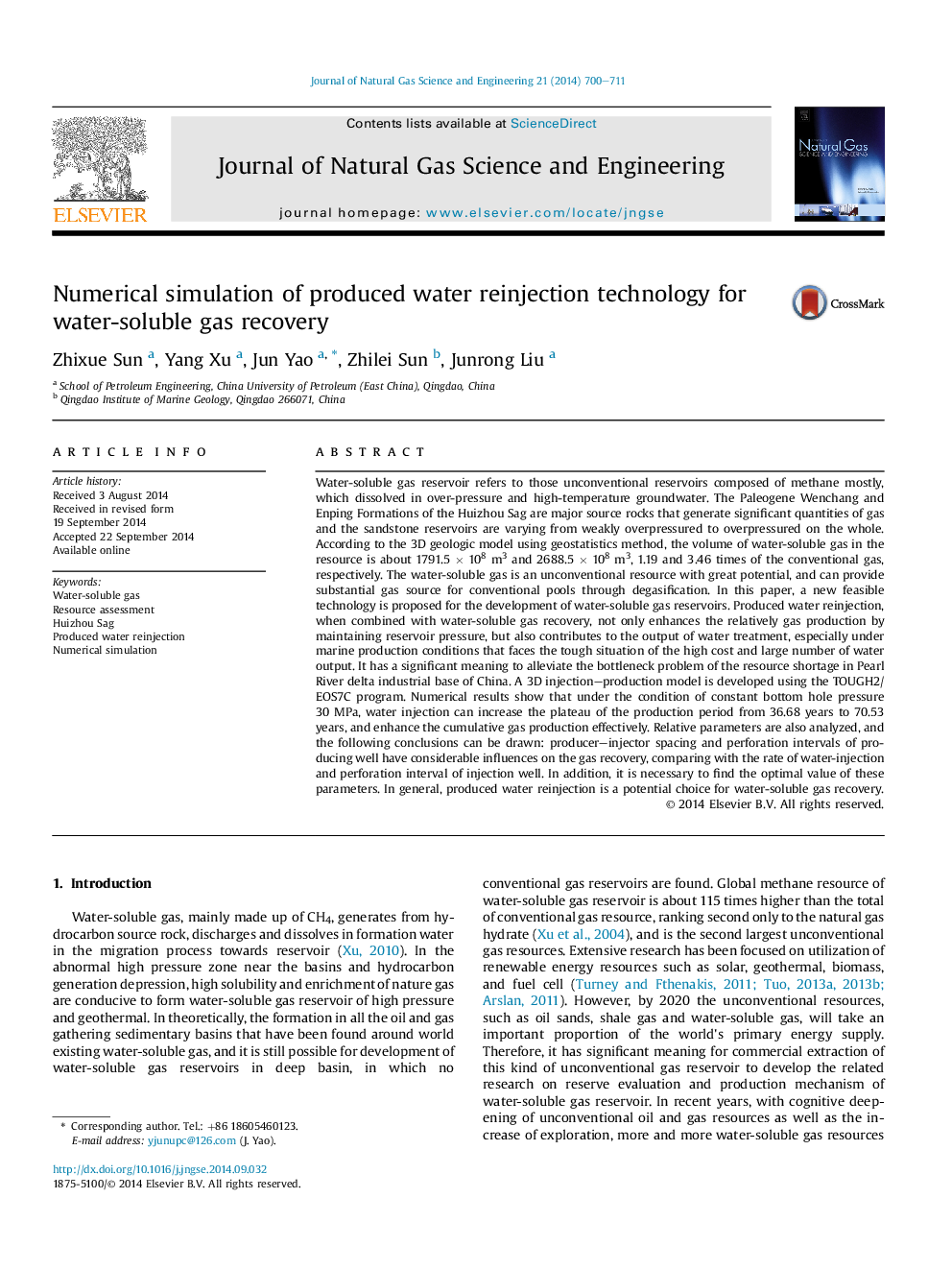| Article ID | Journal | Published Year | Pages | File Type |
|---|---|---|---|---|
| 8129337 | Journal of Natural Gas Science and Engineering | 2014 | 12 Pages |
Abstract
Water-soluble gas reservoir refers to those unconventional reservoirs composed of methane mostly, which dissolved in over-pressure and high-temperature groundwater. The Paleogene Wenchang and Enping Formations of the Huizhou Sag are major source rocks that generate significant quantities of gas and the sandstone reservoirs are varying from weakly overpressured to overpressured on the whole. According to the 3D geologic model using geostatistics method, the volume of water-soluble gas in the resource is about 1791.5Â ÃÂ 108Â m3 and 2688.5Â ÃÂ 108Â m3, 1.19 and 3.46 times of the conventional gas, respectively. The water-soluble gas is an unconventional resource with great potential, and can provide substantial gas source for conventional pools through degasification. In this paper, a new feasible technology is proposed for the development of water-soluble gas reservoirs. Produced water reinjection, when combined with water-soluble gas recovery, not only enhances the relatively gas production by maintaining reservoir pressure, but also contributes to the output of water treatment, especially under marine production conditions that faces the tough situation of the high cost and large number of water output. It has a significant meaning to alleviate the bottleneck problem of the resource shortage in Pearl River delta industrial base of China. A 3D injection-production model is developed using the TOUGH2/EOS7C program. Numerical results show that under the condition of constant bottom hole pressure 30Â MPa, water injection can increase the plateau of the production period from 36.68 years to 70.53 years, and enhance the cumulative gas production effectively. Relative parameters are also analyzed, and the following conclusions can be drawn: producer-injector spacing and perforation intervals of producing well have considerable influences on the gas recovery, comparing with the rate of water-injection and perforation interval of injection well. In addition, it is necessary to find the optimal value of these parameters. In general, produced water reinjection is a potential choice for water-soluble gas recovery.
Related Topics
Physical Sciences and Engineering
Earth and Planetary Sciences
Earth and Planetary Sciences (General)
Authors
Zhixue Sun, Yang Xu, Jun Yao, Zhilei Sun, Junrong Liu,
